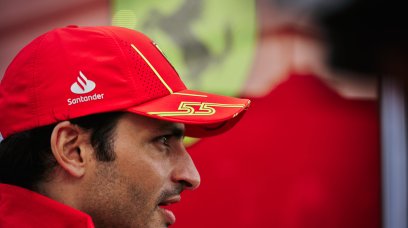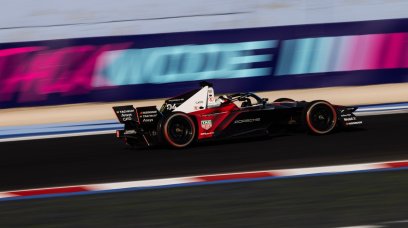One of the most intriguing technical topics so far this season, and worth thinking about during the summer break, is the apparent improved competitiveness of the Mercedes W13. More specifically, if the performances shown in the last few races – from Silverstone onwards – indicate that the Brackley-based team are en route to fighting for victories in the second half of the campaign. If so, this could have a knock-on effect regarding the 2022 title race, even if Max Verstappen and Red Bull hold significant leads in the Drivers' and Constructors' standings. Our analysis begins with the British Grand Prix, where Mercedes introduced the latest wide-ranging aerodynamic update on the W13. Expectations over the upgrade were very high, especially because the peculiar characteristics of the car – whereby its efficiency is only maximised with a low ride height on extremely smooth tracks – seemed ideally suited to the Silverstone track. On that occasion, however, the effectiveness of the new aerodynamic package was not seen in full, with Lewis Hamilton and George Russell more than a second off pole position in a wet qualifying session.
A better understanding of Mercedes' major updates
As a result of the mixed conditions, verification over the effectiveness of these developments required further analysis. Just a week later, the updated W13 would be put through its pace again at the Red Bull Ring, a circuit decidedly different to Silverstone – in terms of layout and undulations. Despite finishing the race in third and fourth, both drivers were a long way off the leaders, with Hamilton 41.2 seconds back, and Russell 58.9s adrift. While their qualifying performance was more encouraging, when Hamilton and Russell found themselves in the mix until their crashes, the race highlighted the ineffectiveness of the developments introduced at Silverstone. At the next round in France, the trend continued in qualifying, with Hamilton and Russell nine-tenths and 1.2 seconds away from pole position respectively. The picture was somewhat brighter in the race, with Mercedes scoring their first double podium of the season – Hamilton 10.5 seconds away from victory and Russell 16.5s back. On reflection, what does this mean? It indicates that Mercedes' race pace, especially in terms of tyre management amid hot air and track temperatures, was effective. But could there also be an element of the stars aligning? Paul Ricard, with its long straights and tight, twisty sections, did not put excessive stress on the tyres in terms of lateral acceleration and slip, making degradation less severe than at other tracks. In addition, the ultra-smooth track surface meant minimal porpoising effects were experienced, allowing the Silver Arrows to make the most of the floor introduced at Silverstone.
Were conditions also a key factor in Hungary?
In Hungary, the thesis that the W13's performance depends heavily on a track's layout and the surrounding conditions was supported once again. In qualifying, Russell claimed a surprise pole position with a track temperature around 20 degrees cooler than what was experienced during Friday practice – when Mercedes struggled for balance. In the race, the gap of eight seconds between Verstappen and Hamilton, with Russell four seconds further back, confirmed that the W13 – in the cooler conditions – enjoyed a much better relationship with the tyres. With tyre temperatures sitting in their optimal windows, the problem of overheating the rears on Friday turned into a decisive advantage on Sunday. As such, this suggests that the performance improvement from the W13 is only partial. While a general improvement of the car's balance is undeniable, the margins seen from race to race are too inconsistent not to be considered track specific. There is no doubt that the performance gap to Red Bull and Ferrari has been reduced, but we believe it to remain at around four-tenths of a second per lap – showing the final step needed to fight for wins once more. And, by averaging the W13's performances in race trim so far this season, an overall improvement of 0.15 seconds seems to be a realistic number.
Most read


















